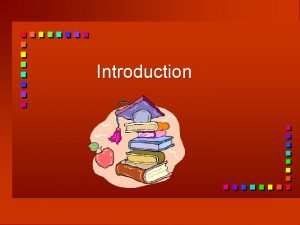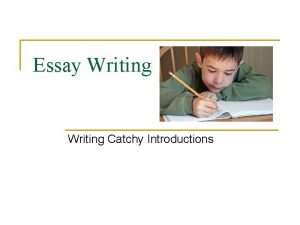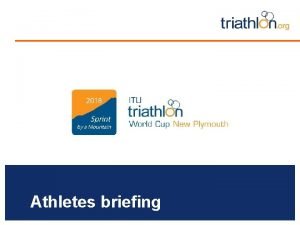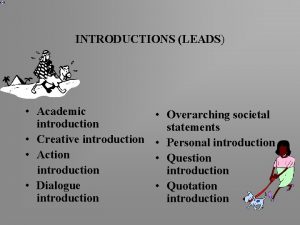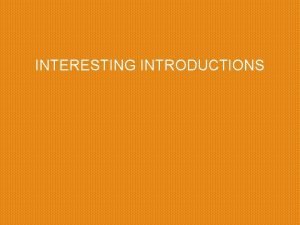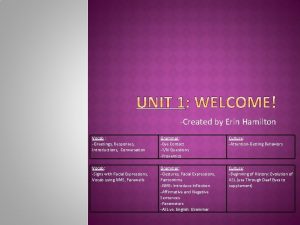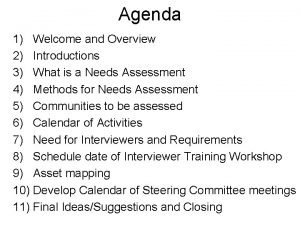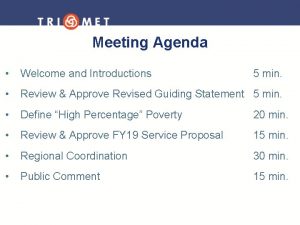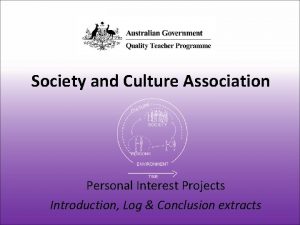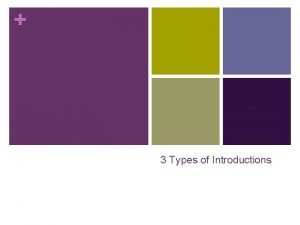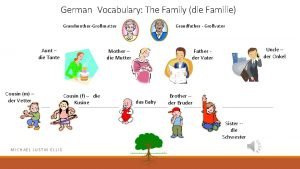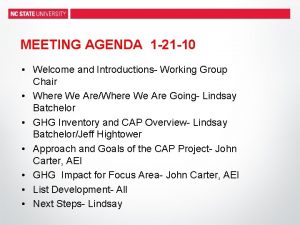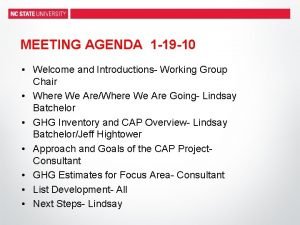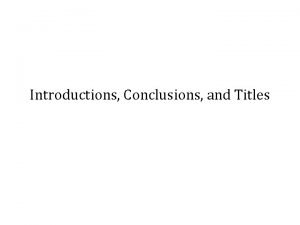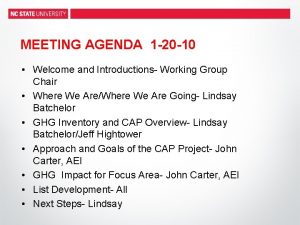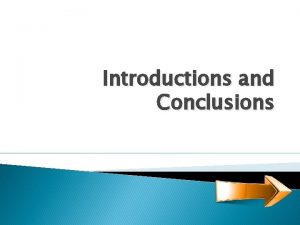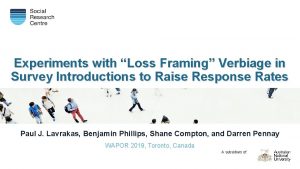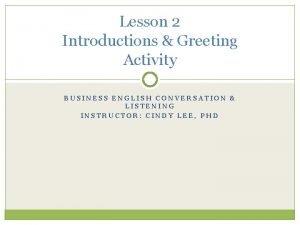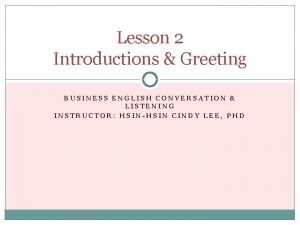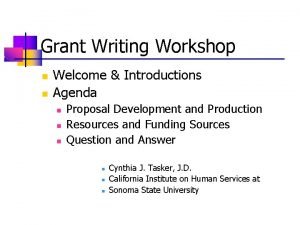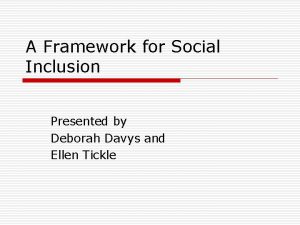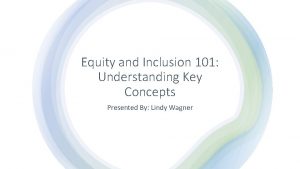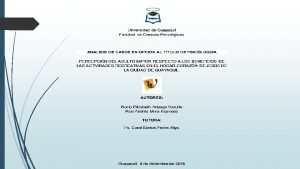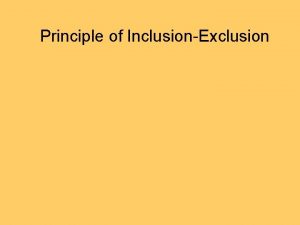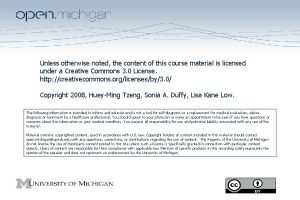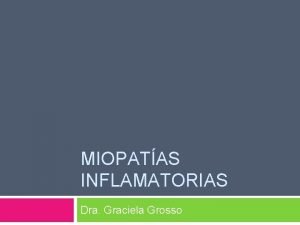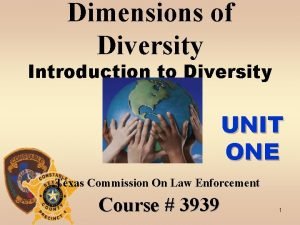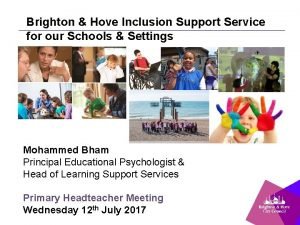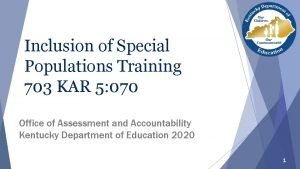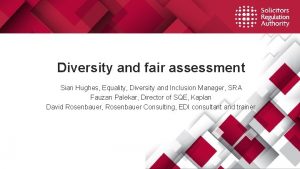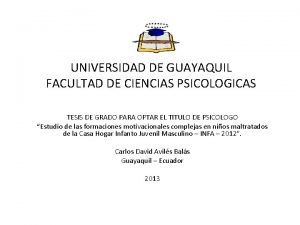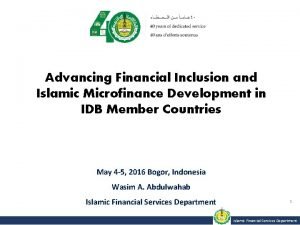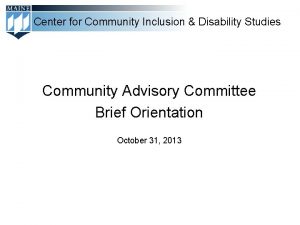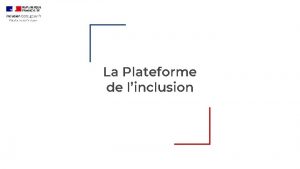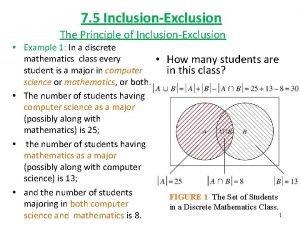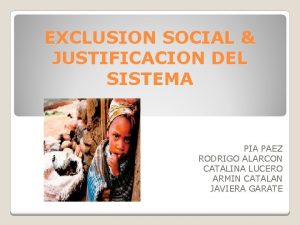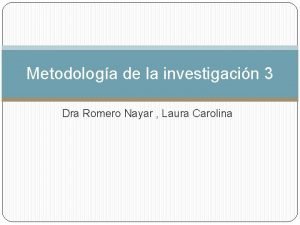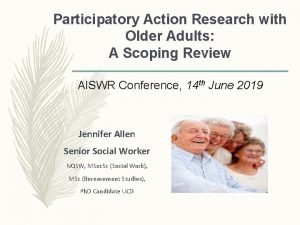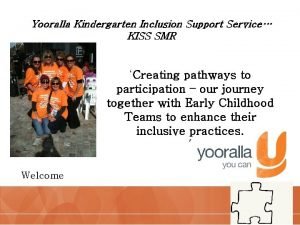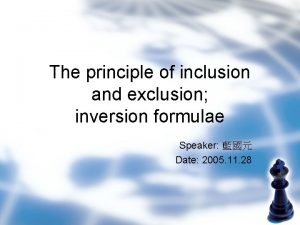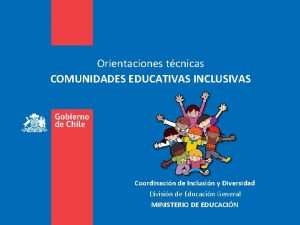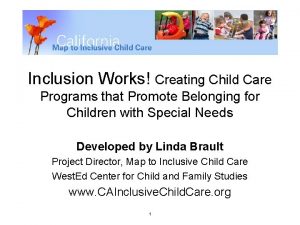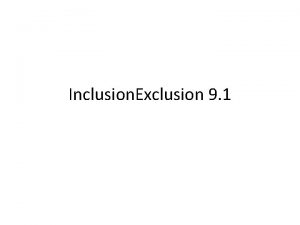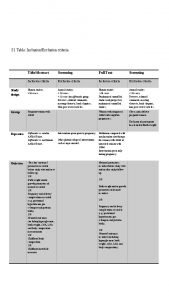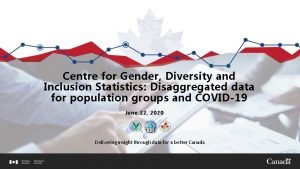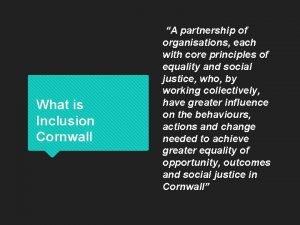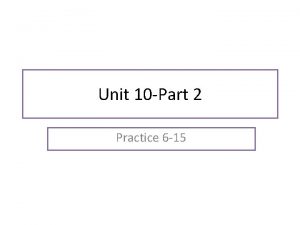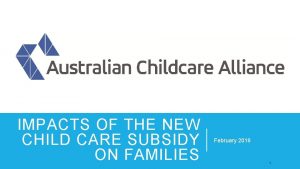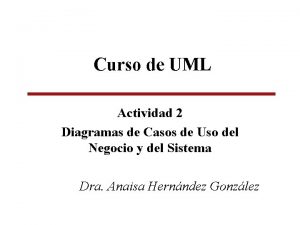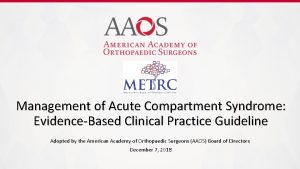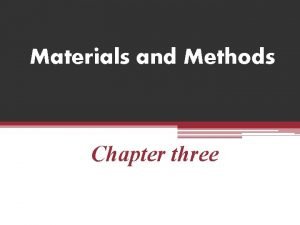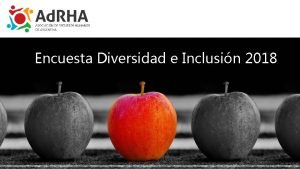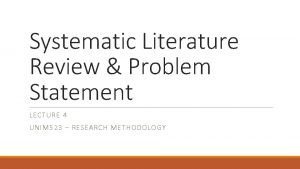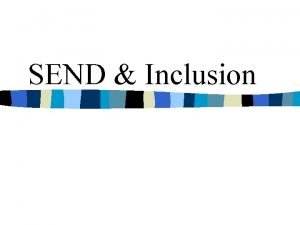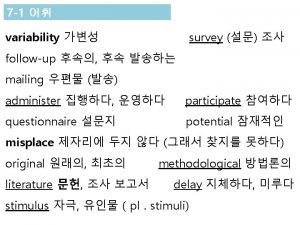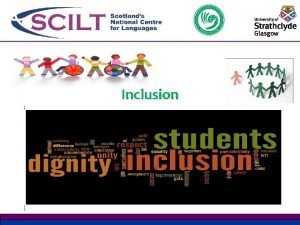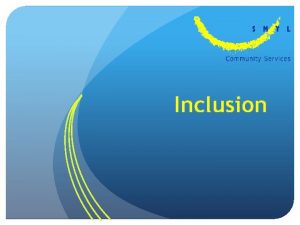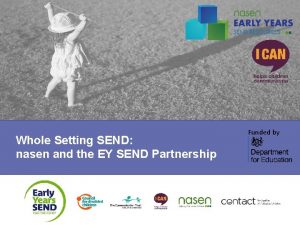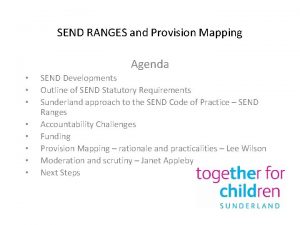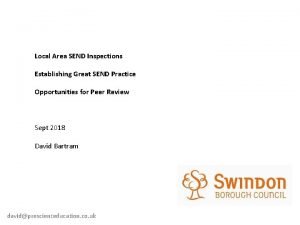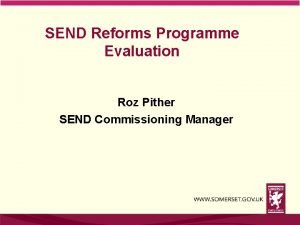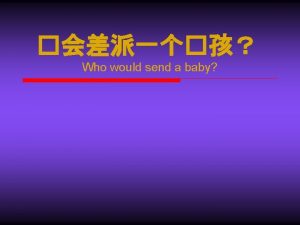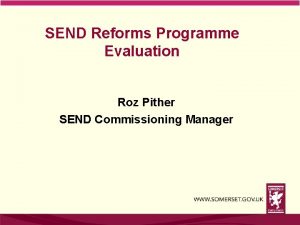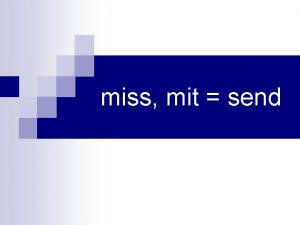SEND Inclusion n Introductions n What is SEND

















































































- Slides: 81

SEND & Inclusion

n Introductions n What is SEND n Early identification and intervention n Inclusive teaching n Inclusive planning

What is SEN? A child is defined as having special educational needs if he or she has a learning difficulty which needs special teaching. A learning difficulty means that the child has significantly greater difficulty in learning than most children of the same age. Or, it means a child has a disability which needs different educational facilities from those that schools generally provide for children of the same age in the area.

What is Disability? A person has a disability if he or she has a physical or mental impairment that has a substantial and long-term effect on his or her ability to carry out normal day-to-day activities

Current Legislation n SEN Code of Practice n Disability Equality Act (DDA) n Green paper – Achievement for all n Allen review – changing a culture from late intervention to early intervention n New summative assessment 24 -36 months

SEN and Disability Green Paper Proposes: • A new approach to identifying SEN in early years settings and schools to challenge a culture of low expectations for children with SEN and give them effective support to succeed. • A new single Early Years setting and school-based category of SEN will build on the fundamental reforms to education which place sharper accountability on schools to make sure that every child fulfils his or her potential. • ‘Identifying children’s support needs early is vital if they are to thrive, and enables parents and professionals to put the right approach in place quickly. ’ (Department for Education, 2011, Para 11)

The Green Paper Proposes: A new approach to identifying SEN A system that supports better life outcomes for young people A system that gives parents more confidence by giving them control A system that transfers power to front-line professionals and to local communities A single assessment process and ‘Education, Health and Care Plan’ A local offer of all services available Parents to have the option of a personal budget by 2014 Giving parents a real choice of school Greater independence to the assessment of children's needs Schools and settings will have greater accountability once they identify children with SEN to ensure their potential is met. School Action and School Action +, changed to setting or school SEN before statement.

n An estimated 20 -30% of children and young people have additional needs at some point in their lives. This could be for a limited period, or on a longer-term basis. It is this group for whom targeted support within universal settings – principally schools, children’s centres and primary health care – will be most appropriate. Early identification, assessment of needs and intervention: The Common Assessment Framework for children and young people, A guide for managers, CWDC, 2009 n The Ofsted review of Special Education Needs and Disability (2010) observed that, “What consistently worked well was rigorous monitoring of the progress of individual children and young people, with quick intervention and thorough evaluation of its impact” (p 6) It is the progress, or lack of it, being made by children that often signifies the existence of a problem.

Early Identification: What alerts you to a child with possible SEN? n Behaviour n Under achievement n Low self esteem n Medical needs n Physical needs

Early Intervention: What do you do about it? n n n n Further observation In class assessment Second opinion Consult with parents Develop an action plan – differentiation, resources etc Review progress Further intervention – IEP? Referral to specialist services

Narrowing the Gap Average Below average

Early identification n Some intervention n Satisfactory progress

Early identification n Appropriate interventions n Outstanding progress

Late identification n Inappropriate or little intervention n Unsatisfactory progress

SEN or Underachievement? n Green paper – too many children are put on registers. n Have we identified the child’s ‘Barrier to learning? n Are they really SEN? Case Study Child profile

The Four Primary Areas of Need Communication and Interaction Behaviour, Emotional and Social Cognition and Learning Sensory and Physical

Barriers to learning n Too much focus on the learning and not on the ‘Barrier to learning n Intervention should be based on the barriers n Curriculum should meet Literacy and Numeracy underachievement n Action plans / IEP’s to focus on Barrier to learning and /or Primary need

Early Identification and Intervention The PURPOSE is to identify as early as possible: n Children with Special Educational needs n Children with disabilities n Children with additional needs and those at risk The AIM of successful intervention is to improve outcomes for these children and, wherever appropriate achieve inclusion in mainstream provision and within their community.

The Benefits of Early Identification and Intervention For the child: n Less likely to experience school failure n Less need for specialist intervention in later years n Promotes a ‘can do’ attitude and significantly reduces the risk of low self esteem n More likely to achieve age-related expectations.

For the parents n Helps parents to have a positive attitude and understand their child n Provides them and their families with the appropriate levels of support n Reduces the isolation that parents often feel n Helps them manage and support the needs of their child more effectively and with confidence

For the School or Setting: n Gives practitioners a greater understanding of the child n Increases confidence in being to meet the child’s needs more successfully n Promotes multi-agency working n Develops the practitioners skills and increases their knowledge of SEN n Embeds inclusive practices Learning and Training Consultancy www. learningandtraining. co. uk

Essential Factors for Successful Identification and Intervention n Early medical screening n A secure knowledge of child development in early years n Teachers and practitioners have a sound knowledge of behaviours and difficulties that may indicate a need n Knowledge of successful intervention strategies n Agency working together to support the family, the child and the school or setting. n Sharing of information to support transitions

Key Elements for Successful Intervention n Knowing the child’s strengths n Having appropriate expectations n Differentiation n Appropriate curriculum – tracking back n Making reasonable adjustments n Additional resources

The Graduated Response Early concern Early years/school action plus Statutory assessment Statement of Special Educational Need SEN are on a continuum. A child may move on to or back from one response to another dependent upon: • Progress over time • Changing needs • Outcomes of reviews

Primary Needs? We must be: n Clear about our expectations n Accurate about the need n Knowledgeable n Confident n Willing to adapt n Inclusive


Speech, Language and Communication Working in pairs discuss think of 5 strategies that your school already has in place to meet speech language and communication needs?

Poor communication skills impact on. . . Mental health Educational achievement • Vocabulary at 5 a powerful predictor of GCSE achievement Behaviour/vulnerability 66% of 7 -14 year olds with serious behaviour problems have language impairment Criminality 40% of 7 to 14 year olds referred to child psychiatric services had a language impairment that had never been suspected Disadvantage Cycle Employability 47% of employers say they can’t get recruits with the communication skills they need 65% of young people in young offender institutions have communication difficulties Children from low income families lag behind high income counterparts by sixteen months in vocabulary at school entry The Bercow Report A Review of Services for Children and Young People (0 -19) with Speech, Language and Communication Needs, July 2008 Jean Gross

Vocabulary at age 5 has been found to be the best predictor of whether children who experienced social deprivation in childhood were able to ‘buck the trend’ and escape poverty in later adult life. Jean Gross

How many children have speech and language difficulties? n As many as half of all children are entering primary schools without the speech and language skills that they need to learn, make friends and achieve. n One in ten children (or 1. 2 million) has a communication disability in the UK. n That’s almost three in every classroom.

WON’T THEY ‘JUST GROW OUT OF IT’? n Just over 50% ‘resolve spontaneously’ – ie. catch up with talking without specialist help - (that means almost 50% do not catch up) n HOWEVER – Multiple educational, emotional and social difficulties are found among late talkers, even if the delay resolves spontaneously (Law, 2000)

n If children still have speech sound difficulties by the age of 6 they are 75% more likely to experience problems with reading and spelling.

What is already available in LA’s to meet SLC needs n Speech and Language Therapy n Specialist Teams n Support from Inclusion and SEN Teams n Accredited training in Speech and Language n All schools and their staff within LA

L I S T E N I N G A N D A T T E N T I O N WHAT TYPES OF DIFFICULTIES DO CHILDREN EXPERIENCE? Selecting Sounds Articulating Sounds Phonological Awareness Speech sound difficulties Concepts Sequencing Vocabulary Receptive Language Difficulties Expressive language Difficulties Sentence structure Pragmatic Difficulties Social skills Word Finding Auditory Memory Using Grammar

Speech & Language & communication difficulties and other related areas of need n Dyspraxia – co-ordination of movement and / or speech organs n Glue ear – can cause chronic conductive hearing loss n Autism – triad of impairment: – Socialising – Communicating – imagination

Speech, Language & Communication n Children with speech, language & communication difficulties will present themselves in different ways. In All cases…… n We must reflect on our practice and be willing to adapt routines, activities and resources

The child with speech difficulties may… n n n n Be reluctant to use speech at all Not developing words at an early stage Be quiet and withdrawn Be a good communicator regardless of the clarity Show frustration or aggression Be difficult to assess Have attention difficulties

Strategies n n n n Gently encourage the child to communicate with you, don’t always expect him to Offer him opportunities to make choices through visual resources. Help the child to successfully communicate with other children Don’t ask him to repeat himself too many times Always value the contribution a child makes even though it may be unintelligible. Model correct speech. This is a specialised area that a SLT should address

The child with Language delay or disorder may… n n n n be quiet and withdrawn play in isolation watch other children and copy what they do. not follow instructions correctly have difficulty in learning new skills present difficult behaviour have very limited concentration avoid things like story time, singing or group activities

Strategies n n n always gain eye contact before speaking keep language as simple as possible give instructions one at a time use facial expressions and gestures to help convey meaning Try to get your message across every time use visual resources as often as possible Look at some resources

n Sign post pages from ‘Square Peg in a Round Hole’ n Resources n Activity – Barrier Game

Autism n Children diagnosed with Autism are often described as being on the ‘autistic spectrum. ’ The term Autistic Spectrum Disorder (ASD) is used to refer to children diagnosed with Autism and Asperger’s syndrome. Children with ASD experience a triad of impairment: n Social communication n Social interaction n Social imagination

A pupil with Aspergers may Use very formal language Take things literally Be unable to initiate conversation Talk at length about their own interests Not understand rules of normal conversation e. g. listening, reflecting, turn taking n Say exactly what they mean n Have very poor social interaction n Have obsessions and rely on routines n n n

Strategies n n n n n Give short, clear and precise instructions Prepare pupil for change well in advance Ensure a structured timetable and daily plan Use visual prompts Apply rules consistently Give ‘specific’ praise Use stories to teach social skills Make other pupils aware of the characteristics of Aspergers Provide opportunities for supported social situations

A pupil with Autism (ASD) may n n n n Have poor social interaction – may seem isolated or aloof Have limited social communication skills Have problems with interpersonal play and imagination Not respond as other pupils do Have obsessions Need to stick to routine Present behavioural difficulties

Strategies n Be calm and consistent n Use visual prompts at all times n Provide routines and structure n Give advance warning of change n Help the pupil to communicate n Plan activities to reduce anxiety

Early signs of a general or specific learning difficulty. n n n Identification indicators: Slow to acquire new skills and concepts Poor listening and concentration skills Poor short term memory Delayed and/or immature language Need for instructions to be repeated frequently

Specific Learning Difficulties n The term Specific Learning Difficulties (Sp. LD) is frequently used within the education community to describe children who mainly have a difficulty WITH READING, SPELLING, WRITING AND MATHEMATICS, although it is now widely accepted that a number of other areas, including memory, organisation and concentration, can be affected.

n Dyslexia, rather than the term Specific Learning Difficulties (Sp. LD), is now being used consistently in current government documentation to describe a specific difficulty in learning to read. n Dyscalculia, rather than the term Specific Learning Difficulties (Sp. LD), is used to describe a specific difficulty with numbers and arithmetic. Dyscalculia was formally recognised as a specific learning disability by the Df. ES in 2001.

n Dyscalculia and Dyslexia occur both independently of each other and together. The strategies for dealing with dyscalculia will be fundamentally the same whether or not the learner is also dyslexic. Difficulty in decoding written words can transfer across into a difficulty in decoding mathematical notation and symbols. For some dyslexic pupils, however, difficulty with mathematics may in fact stem from problems with the language surrounding mathematical questions rather than with number concepts, e. g. their dyslexia may cause them to misunderstand the wording of a question.

A child with Dyslexia may present as: n Having difficulty remembering what is heard in sequence n Not being able to identify sounds e. g. rhymes, syllables or similar sounds n Having a slow reading speed and understanding n Having poor concentration and/or coordination n Having difficulty in ordering letters, days, months.

n Counting particularly in 2’s and 3’s n Calculations. n Numbers with zeros difficult to grasp that the word ten has the same relationship to the numeral 10. n Measures- money, telling time n Direction/orientation spatial orientation (including left and right

Strategies n n n n Encourage effort Differentiate activities or amend worksheets Provide key words, number lines Act as a scribe Encourage self correction Pre teach Practice memory games Encourage use of word processor / Dictaphone, calculator

Developmental Co-ordination Difficulties n Some children’s co-ordination difficulties may be developmental and they may ‘grow out of it’ n Some children with DCD may at a later date be given a diagnosis of Dyspraxia. This is unlikely in pre-school years. n Greek Meaning: DYS – Faulty PRAXIA – Movement

What is DCD / Dyspraxia Immaturity in the way the brain processes information which results in messages not being properly or fully transmitted n Performance in daily activities that require motor coordination is substantially below that expected given the person’s chronological age and measured intelligence n Significantly interferes with academic achievement n It is not due to a general medical condition e. g. Cerebral Palsy. n

DCD / Dyspraxia Affects between 2 – 10% of the population n Boys are 4 times more likely to be affected than girls n Very early signs – irritability at birth, poor feeding, poor sleeping, n Slow to achieve milestones: n • • • Crawling Walking Hopping, jumping Sitting Walking up and down stairs

A more detailed look… Perception - judging position and distance of ourselves in relation of other people and objects n Ocular Motor Control – visual tracking, left to right n Orientation – e. g reversal of letters n Figure Ground Differentiation – difficulty in identifying the small from the large. e. g. picking out one animal from a tray of assorted animals n

Vestibular system – in the inner ear detects the movements of the head. It works with the visual system to help us detect speed of movement, helping us to stay upright against gravity and to keep our balance n Proprioception – messages from our muscles and joints tell us where our limbs and other body parts are. Children with poor Proprioception need to get feedback to confirm where there body parts are. n

Muscle Tone - postural stability. Floppy / bendy n Laterality – left / right confusion, direction, strength n Bilateral Integration- using right and left limbs in combination or opposition n Motor planning – difficulty in carrying out activities or instructions. Not able to generalise or memorise movements e’g riding a bike n

Pre requisites for school n n n n Sit still Pay attention Use a pencil Visually track along a page Organise emotions and behaviour Make decisions Develop capacity for abstract thought and reasoning ALL OF THESE ACTIVITIES ARE DEPENDENT ON WELL DEVELOPED COORDINATION (Adapted from Irving, S et al 2005)

‘Doubly Disadvantaged’ Significant risk of becoming socially excluded in later life n Study by Ramussen (2000): Followed a number of 7 year old children with DCD and found that by the age of 22 years of age 80% were either: Unemployed, broken the law, alcohol/drug misusers or had mental health difficulties n In comparison, only 13% of children without DCD were affected n

A child with DCD/ Dyspraxia may: n n n n n be having difficulty with fine or gross motor skills, find it difficult to sit still at group times appear forgetful, look lost or confused be unable to dress / undress avoid certain activities involving fine or gross motor skills be the child who is not chosen by other children to play look unhappy be ‘clumsy’ find it hard to make choices or organise themselves present behavioural difficulties

Strategies n n n n n Always allow TIME For fine motor skills accept BIG but gradually work towards small For gross motor skills start low and aim HIGH Break down skills into tiny steps Offer lots of opportunities to practice and develop skills Praise every step of success Differentiate activities Provide a range of writing implements Older pupils may need specific writing aids e. g raised writing surface and easy grip pens

Emotional Health and Well being n Self Esteem n Success or failure? n Contribution n Emotional Literacy

Intervention strategies n Differentiate tasks n Break tasks down into small steps with clear and repeated instructions n Offer opportunities for ‘over learning’ new skills n Use of visual timetables. n Keep expectations realistic but challenging.

AD(H)D is a common behavioural disorder that affects an estimated 8% - 10% of school age children. Boys are about three times more likely than girls to be diagnosed with it. Children with AD(H)D act impulsively, are restless and lack focus which impairs their ability to learn properly

A pupil with ADHD may n n n Be inattentive, easily distracted Be forgetful and disorganised Be restless, fidgety and always ‘on the go’ Be impulsive – interrupt, talk out of turn or be unable to wait Find it difficult to manage their own behaviour Be unaware of danger

Strategies n n n n Plan ahead – anticipate Define expectations Give clear, simple instructions Reward specific (good) behaviour Give immediate sanctions for poor behaviour Be consistent and calm Encourage and give meaningful praise

Inclusion ‘Every child has a fundamental right to education and must be given the opportunity to achieve and maintain acceptable levels of learning’ and ‘Every child has unique characteristics, interests, abilities and learning needs’. Salamanca statement – Unesco 1994

Activity Discuss inclusion in your school. Consider strategies, attitudes, barriers and resources

What qualities do you need to be an ‘Inclusive ‘teacher? (Discuss)

Planning’ for Inclusion n The Equality Act sets out a duty not to treat a disabled child ‘less favourably’ than someone else for a reason related to their disability. n The Equality act requires schools and settings to ‘make reasonable adjustments’ for children with disabilities.

What are ‘reasonable adjustments’ in children’s services? n The Equality Act states that all service providers and schools must take reasonable steps to: – Change practice, policy and procedures which make it difficult for disabled people to use a service – Provide auxiliary aids or services to make it possible for disabled people to use a service – Overcome physical features where reasonably possible This is an anticipatory duty

Duty to Plan Schools will have a duty to plan how they will: n Improve access to the curriculum n Improve access to the physical environment n Provide information in a variety of formats

OFSTED Pupil progress. (2 levels ) n Case study n Interventions n Teaching and learning n


Inclusive practice Communication Consider: § EAL § Speech and Language difficulties § Hearing impairment § ASD § AD(H)D

Resources n Differentiated equipment n Stage not age appropriate n Visual resources n Standard

Expectations n Challenging n Appropriate n Explained and agreed n Consistent

Action Plans n n n a tool to document your earliest intervention plans does not have to include a specific target, though it should have an identified area of focus. can be used for children at early concern should be largely strategy based and not target based at this stage. should be shared with parents.

IEP’s n n n An individual tool we work with in order to meet the specific primary needs of individual children Written by class teachers A plan that should address the ‘Barriers to learning A document which is shared, understood and used by all concerned. Should NOT have curriculum targets
 Agenda welcome and introductions
Agenda welcome and introductions Introductions by marsha
Introductions by marsha Catchy introductions
Catchy introductions Grabber for essay
Grabber for essay Agenda welcome and introductions
Agenda welcome and introductions Ancient egypt british council
Ancient egypt british council Creative introductions
Creative introductions Higher persuasive essay
Higher persuasive essay Interesting introductions
Interesting introductions Asl greetings and introductions
Asl greetings and introductions Agenda welcome and introductions
Agenda welcome and introductions Meeting agenda welcome and introductions
Meeting agenda welcome and introductions Sample project introduction
Sample project introduction Inverted triangle introduction example
Inverted triangle introduction example Greetings and introductions
Greetings and introductions German greetings and introductions
German greetings and introductions Agenda for parent orientation
Agenda for parent orientation Meeting agenda welcome and introductions
Meeting agenda welcome and introductions Agenda welcome and introductions
Agenda welcome and introductions Agenda welcome and introductions
Agenda welcome and introductions Benjamin franklin quote and intro paragraph
Benjamin franklin quote and intro paragraph Agenda welcome and introductions
Agenda welcome and introductions Introductions clip art
Introductions clip art Survey introductions
Survey introductions Agenda welcome and introductions
Agenda welcome and introductions Agenda welcome and introductions
Agenda welcome and introductions English business conversation
English business conversation Introduction conversation in english
Introduction conversation in english Agenda welcome and introductions
Agenda welcome and introductions Hse diversity equality and inclusion strategy
Hse diversity equality and inclusion strategy Social inclusion framework
Social inclusion framework Diversity equity and inclusion 101
Diversity equity and inclusion 101 Criterios de inclusión y exclusión sampieri
Criterios de inclusión y exclusión sampieri Etsu equity and inclusion conference
Etsu equity and inclusion conference Inclusion-exclusion principle exercises
Inclusion-exclusion principle exercises Example of inclusion criteria
Example of inclusion criteria Miositis por cuerpos de inclusion
Miositis por cuerpos de inclusion Shrm definition of diversity
Shrm definition of diversity Tarn inclusion criteria
Tarn inclusion criteria What is diversity ppt
What is diversity ppt Stevenson and black 2007 inclusion spectrum
Stevenson and black 2007 inclusion spectrum Bhiss
Bhiss Kde inclusion of special populations
Kde inclusion of special populations What is a precipitating agent
What is a precipitating agent Diversity training outcomes
Diversity training outcomes Inclusion criteria in research example
Inclusion criteria in research example Diversity and inclusion consulting
Diversity and inclusion consulting Inclusion y exclusion
Inclusion y exclusion Ant financial
Ant financial Center for community inclusion and disability studies
Center for community inclusion and disability studies Plateforme de l'inclusion demo
Plateforme de l'inclusion demo Inclusion-exclusion principle
Inclusion-exclusion principle Mona talent priority
Mona talent priority Diversity and inclusion scorecard
Diversity and inclusion scorecard Inclusion y exclusion
Inclusion y exclusion Defination of inclusion
Defination of inclusion Criterios de inclusión y exclusión sampieri
Criterios de inclusión y exclusión sampieri What is the inclusion and exclusion criteria in research
What is the inclusion and exclusion criteria in research Inclusion in gravimetric analysis
Inclusion in gravimetric analysis Kindergarten inclusion support
Kindergarten inclusion support Inclusion exclusion principle proof
Inclusion exclusion principle proof Three dimensions of global inclusion
Three dimensions of global inclusion Escuelas y servicios educativos sc
Escuelas y servicios educativos sc Qué es inclusión
Qué es inclusión Radiation safety
Radiation safety Inclusion works creating child care programs
Inclusion works creating child care programs Derangements formula
Derangements formula Gmef meaning
Gmef meaning Financial inclusion centre
Financial inclusion centre Inclusion criteria
Inclusion criteria Centre for gender diversity and inclusion statistics
Centre for gender diversity and inclusion statistics Inclusion cornwall
Inclusion cornwall What is hyponymy
What is hyponymy Inclusion support subsidy
Inclusion support subsidy Three dimensions of global inclusion
Three dimensions of global inclusion Indica cuál de los conceptos está implicado en los demás
Indica cuál de los conceptos está implicado en los demás Diagrama cun
Diagrama cun Dei pulse
Dei pulse Inclusion criteria
Inclusion criteria Inclusion criteria in research example
Inclusion criteria in research example Encuesta de diversidad e inclusión
Encuesta de diversidad e inclusión Literature review problem statement
Literature review problem statement

